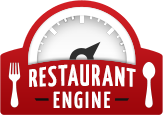10 Factors That Affect Your Restaurant Profit

Increase your profits by treating your employees well so you increase employee retention.
The chef is experienced and talented. Your ambiance and décor are outstanding. But, your profits aren’t where you want them to be.
Many people open a restaurant thinking if they have the most delicious food in town, people will flock to their doors. Yet, they ignore the basic principles of the restaurant business and undoubtedly join the 80% of restaurants that fail in the first five years.
What’s the key to success? How do you avoid failure? The key is to maintain at least an average and preferably a much better than average profit margin each year.
To help you manage your profit margin and keep your doors open, let’s look at 10 factors that affect your restaurant profit.
#1: Labor Costs
Are your employees abusing your time clock? This is worth a look every pay day.
You want to make sure they’re clocking in and out when they are supposed to so you aren’t overspending on payroll.
#2: Food Waste
Food waste is a tragedy.
Take a look at how much food your servers are throwing away after each meal they serve. If it’s excessive, your portion sizes are too big.
In addition, you can reduce food waste by using as much of each item as you can. For example, use your chicken bones and vegetable scraps to make a broth.
Another way to avoid food waste is to manage your inventory. For example, you don’t want your chef throwing away three heads of lettuce each week because you ordered too much.
#3: Employee Theft
You may not want to think about it, but many restaurants have high theft rates among their employees. (tweet this)
Staff see an easy meal and take advantage of it.
Combat employee theft with a good system in place to track your food costs. Take inventory often and know exactly where your food is going.
Additionally, if you offer staff a meal before or after their shift, consider keeping it to a set menu. This keeps them from eating those items on your menu that cost you a lot to prepare.
#4: Employee Turnover
Most restaurant owners don’t take employee turnover into consideration when thinking about profits, but it can take a chunk out.
The restaurant industry is known for its high turnover rates, so losing staff is nothing new. But, did you know that employee turnover costs you thousands?
This is because each time you have to on-board and train a new employee, it costs you money, and lots of it.
Take some steps to improve your employee retention rates. This may be through better pay and an increase in benefits.
Don’t forget a few other areas as well:
- Employee morale – treat your employees well by acknowledging their hard work with a thank you.
- Offer advancement opportunities.
- Train your employees well on an ongoing basis.
- Invest in leadership training for your managers so they know how to lead.
#5: High Wait Times
How long your customers have to wait for a table or service at your restaurant affects your profit.
While that may seem counter-intuitive because a busy restaurant is a profitable one, it pays to look at why you have high wait times. Here are some things to look out for:
- Customers are waiting too long from the time they initially sit down to when the server takes their order. This is dead time when no profit is being made.
- Your kitchen is slow, and people are waiting for their food. This causes a bottleneck, and your tables don’t turn over as quickly.
- You don’t have enough staff on hand to take care of your customers. Not only does this halt table turnover, but it creates angry customers who may not be back.
- High wait times are caused by overall poor customer service.
Take a long look at what’s causing your high wait times. Fine tune any processes that aren’t working well.

Manage your busy times to keep tables moving.
#6: Vendor Price Gouging
Have you shopped around for vendors?
You want to make sure that by using just one vendor, you aren’t experiencing price gouging.
Check prices and always ask vendors if they’ll price match.
#7: Accounting Issues
How is your accounting? Do you have a good system in place to track expenses, invoices from suppliers, payroll and more?
Accounting issues can affect your bottom line if you don’t have someone looking over invoices for mistakes such as double charging and charging for food you didn’t actually receive.
Hire someone to handle your accounting and manage your money coming in and going out.
#8: Customer Retention
Did you know it’s cheaper to retain a customer than it is to acquire a new one?
Yet, many restaurant owners pour their marketing dollars into acquisition instead of retention.
Make your customers feel valued, and in turn they’ll give you loyalty. As a bonus, those loyal customers will tell others about you so you are not only retaining a customer but perhaps getting a new one.
One great way to increase your retention rate is to put a loyalty rewards program into place.
Reward customers for their loyalty, and you’ll see your profits rise.
#9: Portion Control
One day your customer comes in and gets his tacos stuffed with meat, while the next time he visits, his taco is barely half full.
If this sounds familiar, you have a problem with portion control.
One of the most important things you can do to manage your profits is to establish portion controls. (tweet this)
For example, if you go to a national chain restaurant in Los Angeles and to one in New York, you can bet your portion will be exactly the same.
Consistency is key when it comes to your profits.
Be predictable so your customers can count on the same portion every time. Not only does this make them happy, but it controls your costs.
Have your kitchen staff weigh and measure portions so they remain the same from plate to plate.
Finally, watch your bartenders. Overpours take a deep bite out of your profits.
#10: Outdated Website
Potential customers are looking for you online. If your website isn’t up-to-date and mobile-friendly, you’re going to lose business.
Make sure your phone number, location and menu are front and center on your website so you don’t lose potential customers and in turn your profits.
Final Thoughts
Your profit is the money left over after you deduct your operating expenses from your gross revenue.
To increase your profit, it’s important to manage your expenses – it’s vital that you know what’s coming in and going out on a weekly basis.
Now that we’ve looked at 10 factors that affect your restaurant profit, you may be wondering just what your profit margin should be.
While there is no set answer to that question because all restaurants are different, there is a generally accepted average for restaurants.
The general average is a profit margin of 3-5%, while the range can go from either extreme to 0-15%.
Bottom line – you want to maintain an average or better profit margin each year to keep your doors open and the money coming in.
The best way to keep an eye on your restaurant profit? Manage your expenses and watch them consistently.
Images: Toa Heftiba and Abdullah Oguk
Your online presence can increase your profits by driving visitors to your restaurant. Do you have a great website that highlights your restaurant? Is it user-friendly and enticing? If not, or you’d like a website tune-up and refresh, contact us for your free website consultation. We’ll make sure your website works for your site visitors and is the centerpiece of your marketing.


Leave a Reply